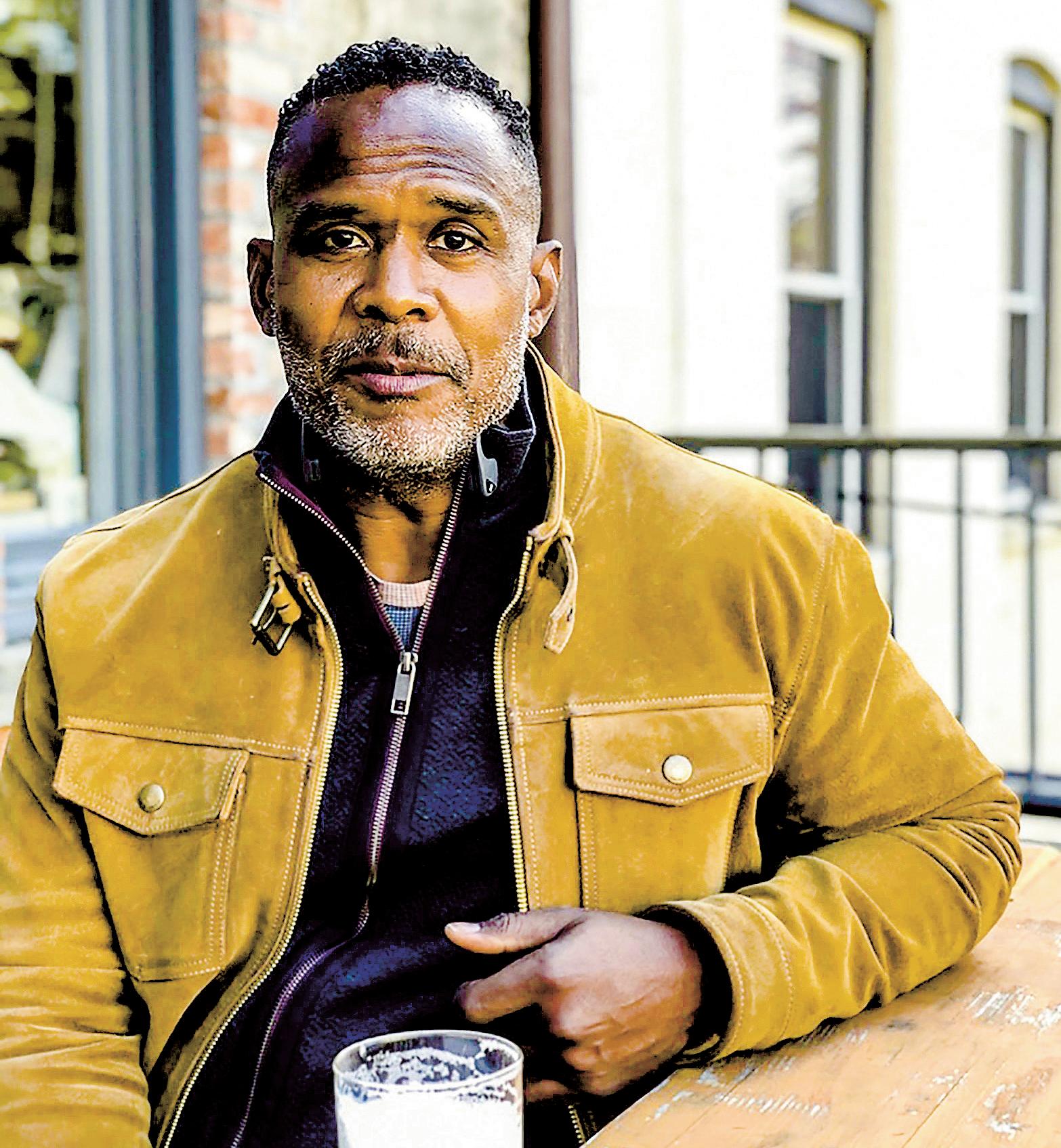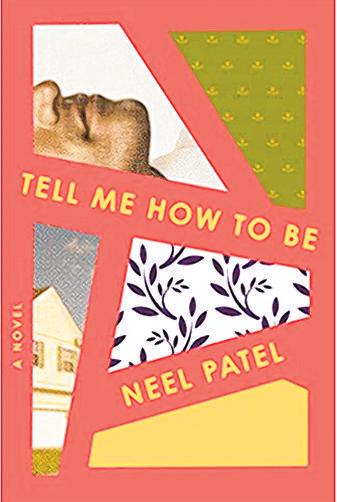
4 minute read
‘Pilot Impostor’a marvel of literary creativity
BY MELISSA HOLBROOK
ames Hannaham’s first two novels, 2009’s “God Says No and the PEN/Faulkner Awardwinning “Delicious Foods” of 2015, vaulted him to the top tier of inventive American writers. Now, the publication of “Pilot Impostor should secure his place at the apex.
Advertisement

Hannaham is not only creative or stunningly gifted or intellectual or supremely original, but all those distinctions at once. This genre-defying book of compressed prose, poetry and image is the product of a mind and heart pushing the artistic tachometer to the red line Its genesis was a flight to Lisbon just after the 2016 election. Hannaham was reading Fernando Pessoa, the great modernist who inhabited a multiplicity of voices he called heteronyms some 70-plus personae that were simultaneously aspects of himself and whole-cloth creations. This protean assembly provides Hannaham the ideal entry to an exploration of self, consciousness and creativity.
“Pilot Impostor is the record of a Black man observing himself observe a deeply peculiar moment. The controls of the American experiment were newly in the hands of a man embodying the “poison cocktail of faked experience plus confidence,” as Hannaham described in an essay in Bookforum. The role of algorithms in determining what we perceive was increasingly insidious. And he was on his way to a country that had birthed both the trans-Atlantic slave trade and the odd genius of Pessoa. The book delves into these themes, and many more, all interlocking by way of Hannaham’s visual art and brief textual performances, stills from air-disaster videos, screenshots and fragments of Pessoa’s work The book is so thoroughly fused it is hard to extricate an example, in the way it’s meaningless to examine a single thread from the Bayeux Tapestry, but I was particularly struck by a list piece titled “To Confound Forensics.” This surreal compilation of ways to get away with murder (No. 16: “Be a chimera.”) is juxtaposed on the facing page with a screenshot showing a Facebook pop-up that warns “You are viewing your profile as someone else.” Hannaham suggests each of us now encompasses such a multitude of heteronyms, to feed algorithms that then feed us, it can make a Pessoa of anyone. What is the self, and how can we know it? The role of chance in determining experience is perhaps the overriding, but far from only, subject of this ingeniously faceted book It returns again and again to the strange fact that much of life is now conducted inside a box outside of ourselves to which we outsource our thinking. The computer looks at things for us, through the remove of the camera eye; it remembers things we will forget; with its help we make “profiles,” or alternate selves. The idea that consciousness is but a contingent arrangement of experiential fragments is reflected in both the structure and content of the book. Hannaham’s short texts philosophical inquiries experimental and speculative fictions, prose and poems, even a Bowlesian Sonnet —each respond to a brief bit of Pessoa’s poetry hovering suggestively in the margins of the page. These in turn respond to each other, while the author’s subtle ordering poses aquestion about whether it is possible to ever know the “real” Pessoa. (Answer: Is there a real anyone?)
“Pilot Impostor has as many fine gears as a Swiss watch. Its several organizational principles together imply that the creation of self only unfolds over time we become most “ourselves” as we accumulate the sediment of what by chance happens to us
Some of these are accidents. Some are delivered in our DNA. But we make something of them nonetheless a narrative informed by cognitive bias a fictional projection a work of art. Or a book that accomplishes them all. The visuals here are in conversation with the texts, which are themselves in conversation with the fragments from Pessoa. Images from air disaster videos, as well as hoax imagery that proliferates online such as the meme known as “9/11 Tourist Guy that purported to show a man on the deck of the World Trade Center moments before a plane hit comment on the ways digital obsessions take shape. Other images include Hannaham’s assemblages of thumbnail photos of surfaces (Portuguese tile, stained glass, mosaics) and apertures (sky, grates, perforations), still bearing their digital sizing tools. With them the artist proposes that factuality is contextual, perception nothing but an artifice of composition. Hannaham’s signature sly humor often carries a surprise hit of acid. His second novel posits the plantation slavery system’s persistence in contemporary society; where there were chains and whips there is now drug addiction, to the same end. Famously, one of the “Delicious Foods” central characters, with its own idiosyncratic voice, is crack cocaine. Ventriloquism is only one of Hannaham’s profuse talents
RECOMMENDED READS Welcome to our literary circle, in which San Diegans pass the (printed) word on books
Melissa Giffen
Job: Youth Services Librarian, Scripps Miramar Ranch Library, San Diego Public Library
She recommends: “Burnout: The Secret to Unlocking the Stress Cycle” by Emily Nagoski and Amelia Nagoski (Ballantine Books, 2019; 273 pages)

Why? Sisters Emily and Amelia Nagoski have created a book that’s a scientific and empathetic look at stress-related “burnout,” including what it is, why so many people (especially women) have it and what science says about what we can do to manage not just cope with our stress. Through their own personal anecdotes and those of close friends, the Nagoskis share concrete examples of the consequences of being overwhelmed by stress and how implementing these scientific methods designed to dismantle stress frees us from carrying it in our minds and bodies long term. Those who are scientifically minded will appreciate the Nagoskis’ science-based approach and thorough citations. For the rest of us, it’s an accessible read that will give hope and practical help to anyone who feels overwhelmed by everything they have to do (and be) on a regular basis.
Marianne Reiner
Job: Bookseller, La Playa Books/Run for
Cover Bookstore
She recommends:
“Tell Me How to Be” by Neel Patel (Flatiron Books, 2021; 336 pages)
Why? Renu and Akash are the mother and son in this poignant Indian American family story. As they are about to celebrate the one-year anniversary of their husband and father’s passing, they meet again in the family home in Illinois where they must wrestle with the deep-held secrets they each keep. Akash, who is gay but not out to his mother and brother, must come to terms with the story of the boy who first broke his heart years ago if he wants to have a chance at living a happy and healthy life now. The widowed Renu, whose acerbic humor had me laugh out loud more than once, confronts her past and whether she made the right decision more than 30 years earlier in choosing to marry a man she did not love leaving behind her first and only love. This excellent debut novel explores the themes of love betrayal and reconciliation in a modern, funny and tender way that is sure to make it a readers’ favorite book in 2022.











